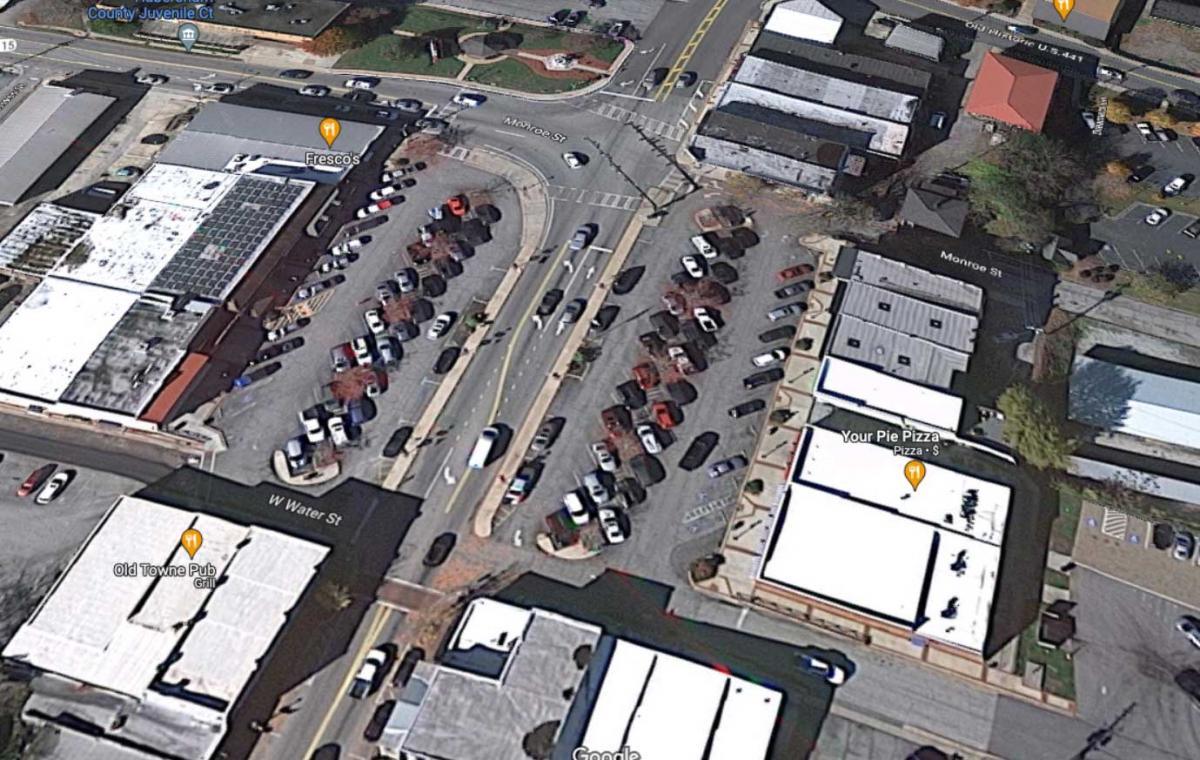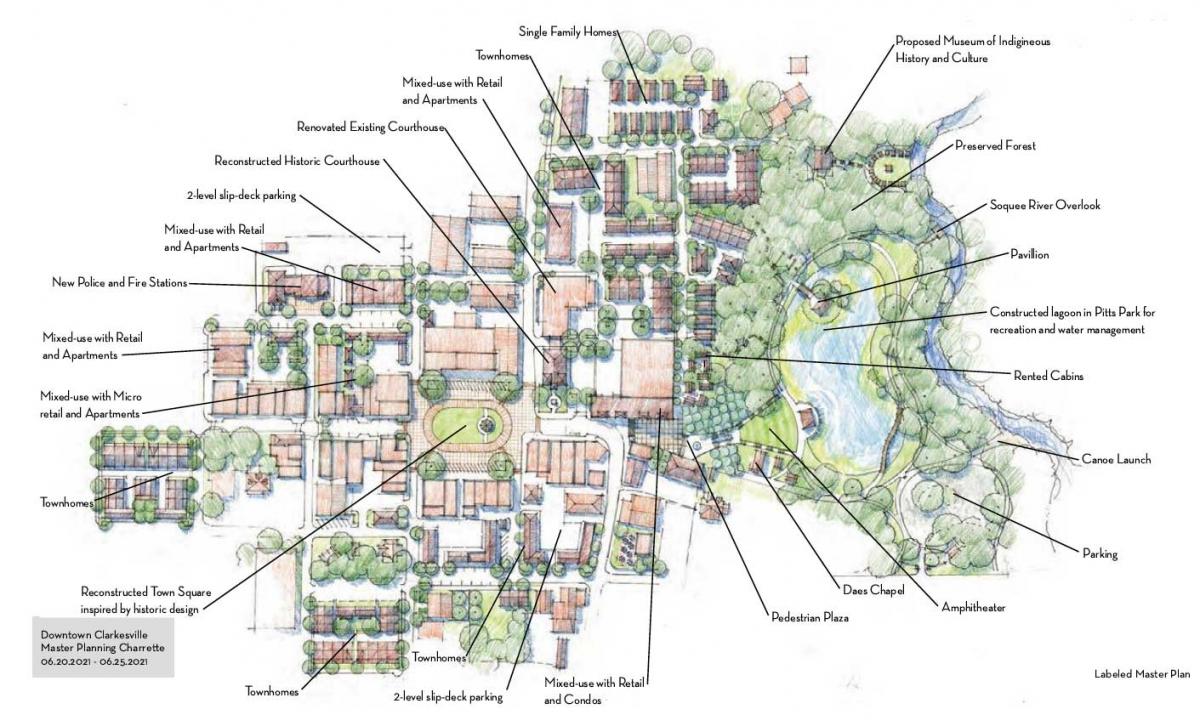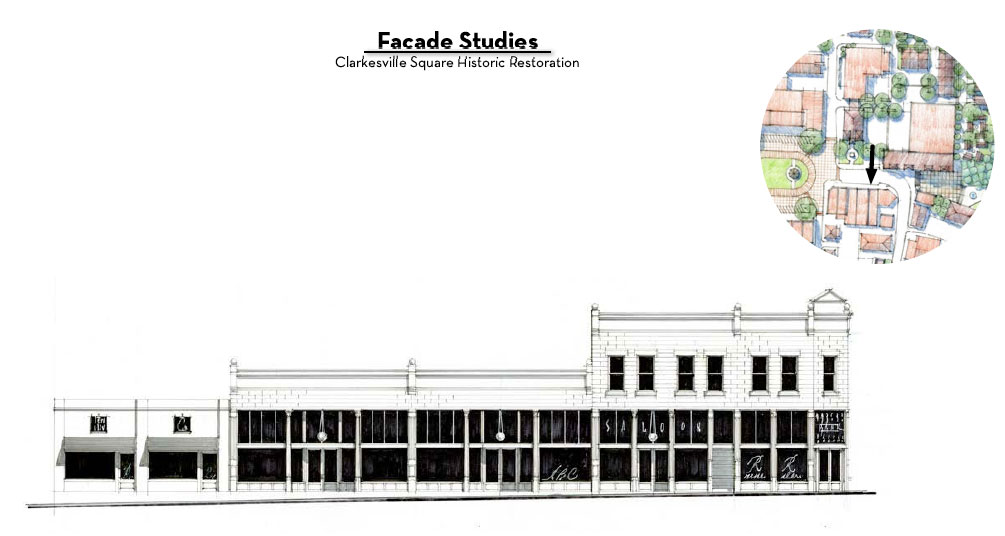
Restoring a lost square
What can be done when a historic courthouse town has been robbed of its square? Clarkesville, Georgia, was founded two centuries ago as the seat of Habersham County, and grew as an early resort town in the Appalachian foothills about 70 miles northeast of Atlanta. The municipality of about 2,000 people—technically a city—was centered on a green space in the middle of a classic American courthouse square.
Mixed-use main street buildings around the square are mostly still standing, but a highway replaced the public space in the 20th Century. The square now resembles two strip malls fronted by parking lots on opposing sides of the thoroughfare, albeit with old buildings. The historic courthouse was torn down, supplanted by a forbidding modernist building a block away from the square.

A master plan by Lew Oliver Inc., based in Clarkesville, has many important elements, but the main idea is to restore the public space (see aerial rendering at top). “According to historical documents, the green space within the Clarkesville Square originally took an oval shape,” the design firm told CNU. “Moving forward, we can recreate this oval green with a large roll-over apron for truck traffic and with a layer of diagonal parking along the edge for retail access and traffic control. The gazebo currently behind the war memorial can be relocated to the square as a centerpiece to the town.”
With input from public officials, citizens, and business owners, the 75-acre plan is a comprehensive vision for Clarkesville. It calls for new housing and development—185 dwellings, new retail and office space, and civic buildings, including a museum celebrating indigenous culture of the Mississippian, Creek and Cherokee tribes. Landscape drawings for a revamped 30-acre park on the Soque River, to the northwest of the square, incorporate flood control infrastructure in the form of a small lake, and an amphitheater. One map shows how proposed multiuse trails could connect Clarkesville with nearby towns.

The designers suggest that the old courthouse could be rebuilt as apartments or a hotel on its original site, closing a hole in the urban fabric. Many of the facades around the square have been altered, and the designers show how renovations could restore the architectural integrity of the buildings.
“Given the rich fabric of the City’s history, the planning/design team was charged with weaving together the best of the past with the most enlightened practices of the future for strong urbanism and community,” the designers explain. “These plans create a social and economic value through market-tested planning strategies.”

Old American courthouse towns were designed with a structure that helped to give them meaning, much like towns in the Southwest based on the Law of the Indies. Often, in the 20th Century, the courthouse square structure was damaged by thoroughfares and automobile-oriented planning. Recovering what was lost is not easy—it’s a process of strategic elimination and addition to repair and reveal the form that is hidden while the town grows.
“The town square design takes an existing soulless parking lot scheme and massages it into its original form – which is believed to resemble a historic Savannah public green,” the designers note.
“I see this redevelopment plan as an exciting opportunity to utilize the old courthouse which is currently an eyesore and redevelop the site to expand both residential and commercial opportunities in downtown Clarkesville,” notes City Manager Keith Dickerson. “Once the project is underway, it will act as a catalyst for further residential and commercial growth.”




